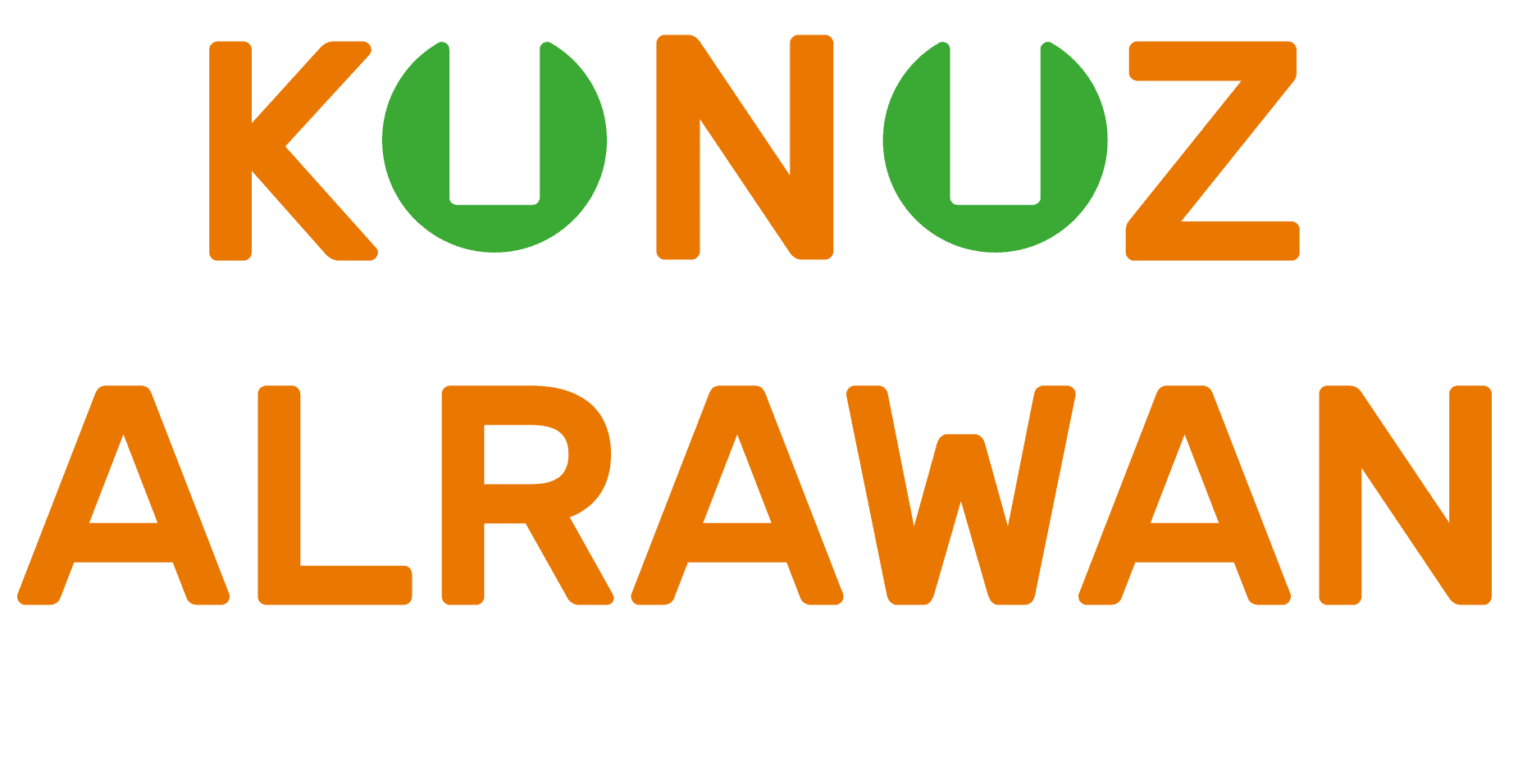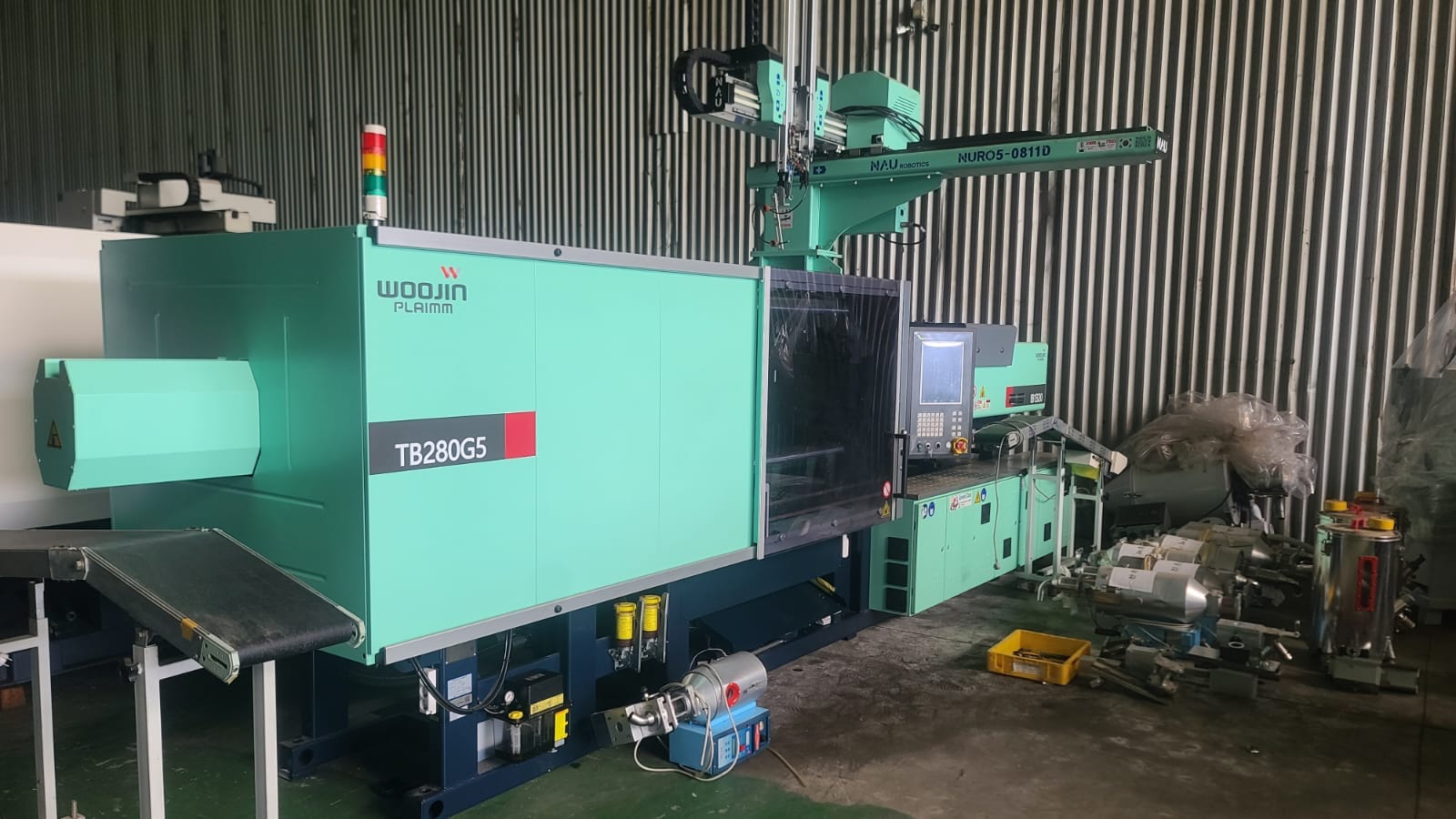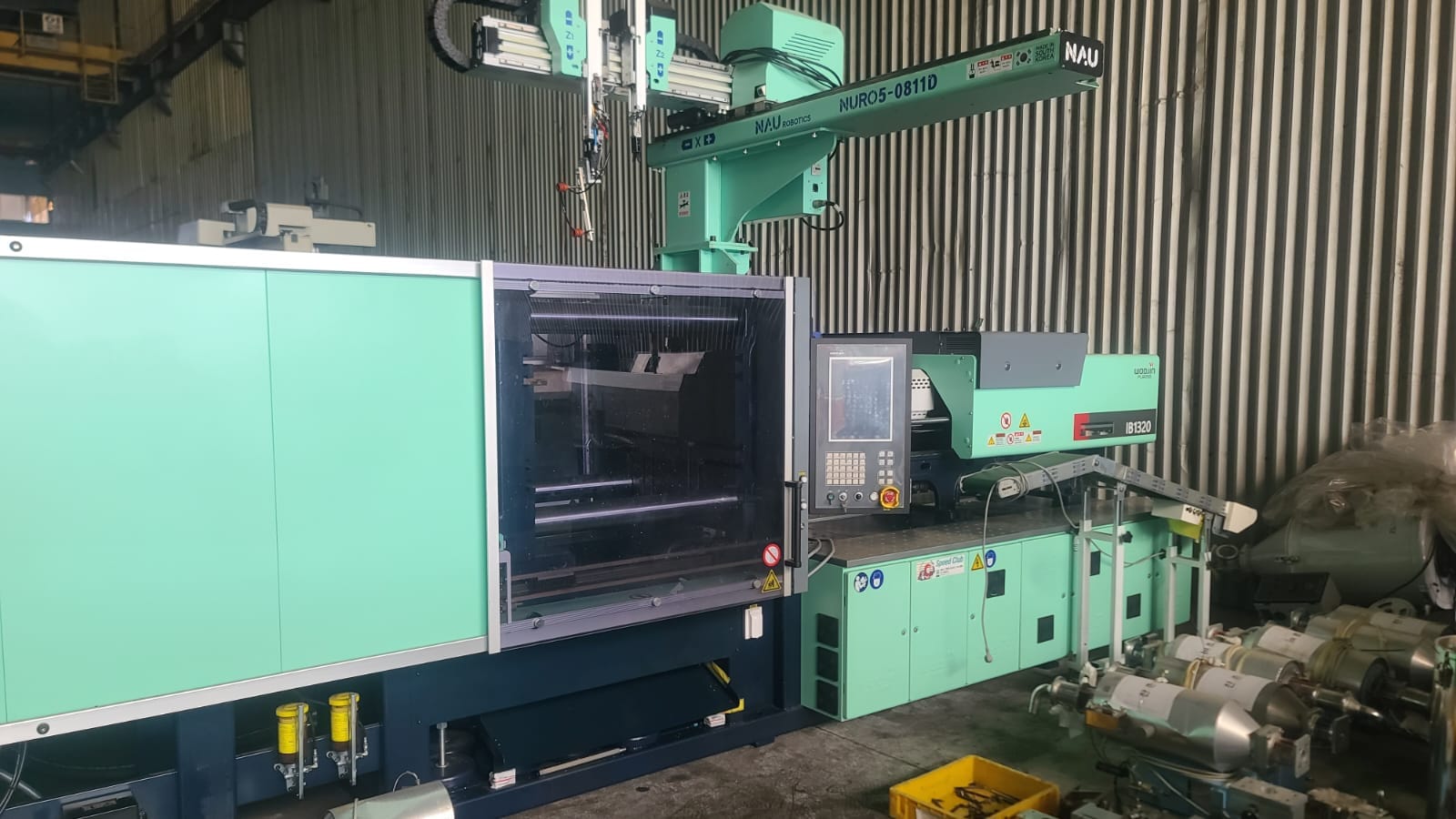INJECTION MOLDING
280ton injection molding machine with robotics,
Brand: Woojin
Year: 2022
Great, you’re describing a 280-ton injection molding machine with robotics by Woojin, year 2022. Here’s a concise overview to help you assess or specify the model, typical capabilities, and a checklist for verification or procurement.
Quick profile
- Brand: Woojin
- Model class: 280-ton horizontal injection molding machine (likely two-platen or toggle/crank design depending on exact line)
- Year: 2022
- Automation: Integrated robotics option (pick-and-place robot, typically inline with part removal, post-mold operations, or secondary assembly)
- Common configurations:
- Clamp force: 280 tons
- Shot size: varies by resin; typically ~115–230 g for standard polymers (PP, PS, PET, ABS, PC blends). Exact shot size depends on mold design and screw diameter. Robot options: Cartesian or Articulated robots, part grasping styles, servo-controlled or servo-driven axes, end-of-arm tooling (EOAT) tailored to part geometry.
What to verify / questions to answer
- Model and tooling specifics:
- Exact model number (Woojin line often uses abbreviations like WJ-280, SLR-…; confirm from nameplate or model tag).
- Screw diameter and L/D ratio (affects shot size and plasticizing capacity).
- Mold protection and safety features (guarding, interlocks, safe operating procedures).
- Robot details:
- Robot type and reach (e.g., Cartesian vs. 6-axis articulated).
- Payload capacity and speed (gripper open/close times, cycle time impact).
- End-of-arm tooling (EOAT) compatibility and current tooling in use.
- Integration with machine control (ISO 13849 safety, PLC/HMI compatibility).
- Performance and specifications:
- Maximum injection pressure and backpressure settings.
- Injection speed and cure/dwell times.
- Cooling channel options and cycle time targets for your typical parts.
- Power requirements and hydraulic or electric drive specifics (all-electric, hydraulic, or hybrid).
- Mold and process considerations:
- Typical minimum/maximum shot size for your target resin.
- Nozzle temperature control and platen size, stroke, and tie-bar spacing.
- Mold clamping force distribution and parallelism checks.
- Maintenance and service:
- Availability of Woojin parts and service network in your region.
- Maintenance plan for both the machine and the robot (lubrication, filter changes, servo kinestics).
- Firmware/software version on the control system and robot controller.
- Electrical & controls:
- Control system brand/version (e.g., Woojin CH series, or third-party CNC/HMI).
- Communication interfaces (Ethernet/IP, Profinet, EtherCAT) for integration with factory PLC/robotics.
- Safety features: light curtains, pressure safety, emergency stops, reset procedures.
- Automation integration:
- Sensor integration for part detection, stack lights, part quality feedback.
- Data logging capabilities (cycle time, clamp force, shot size, robot cycle times) for OEE/6S.
Typical performance targets (illustrative)
- Cycle time: Depending on part complexity, gate freeze, and robot handling, a 280-ton machine with robot might target cycle times in the range of 15–45 seconds for typical mid-size parts.
- Utilization: Automated part removal can increase line throughput by 20–40% compared to manual handling, depending on part geometry and robot capability.
- Quality consistency: Reproducible shot size and consistent sealing due to precise servo/hydraulic control and robot repeatability.
Next steps
If you’re considering this machine (buying, selling, or upgrading), please share:
- The exact model code or a photo of the nameplate.
- Resin type and typical part dimensions.
- Desired cycle time and production quantity.
- Your region for service/support considerations.
With those details, I can tailor a more precise spec sheet, a checklist for inspection before purchase, and a sample acceptance test plan (IQ/OQ/PQ) for commissioning the Woojin 280-ton with robotics.
1,00 EGP
Authorities in our business will tell in no uncertain terms that Lorem Ipsum is that huge, huge no no to forswear forever. Not so fast, I'd say, there are some redeeming factors in favor of greeking text, as its use is merely the symptom of a worse problem to take into consideration.
Anyway, you still use Lorem Ipsum and rightly so, as it will always have a place in the web workers toolbox, as things happen, not always the way you like it, not always in the preferred order.
Product details
280ton injection molding machine with robotics,
Brand: Woojin
Year: 2022
Great, you’re describing a 280-ton injection molding machine with robotics by Woojin, year 2022. Here’s a concise overview to help you assess or specify the model, typical capabilities, and a checklist for verification or procurement.
Quick profile
- Brand: Woojin
- Model class: 280-ton horizontal injection molding machine (likely two-platen or toggle/crank design depending on exact line)
- Year: 2022
- Automation: Integrated robotics option (pick-and-place robot, typically inline with part removal, post-mold operations, or secondary assembly)
- Common configurations:
- Clamp force: 280 tons
- Shot size: varies by resin; typically ~115–230 g for standard polymers (PP, PS, PET, ABS, PC blends). Exact shot size depends on mold design and screw diameter. Robot options: Cartesian or Articulated robots, part grasping styles, servo-controlled or servo-driven axes, end-of-arm tooling (EOAT) tailored to part geometry.
What to verify / questions to answer
- Model and tooling specifics:
- Exact model number (Woojin line often uses abbreviations like WJ-280, SLR-…; confirm from nameplate or model tag).
- Screw diameter and L/D ratio (affects shot size and plasticizing capacity).
- Mold protection and safety features (guarding, interlocks, safe operating procedures).
- Robot details:
- Robot type and reach (e.g., Cartesian vs. 6-axis articulated).
- Payload capacity and speed (gripper open/close times, cycle time impact).
- End-of-arm tooling (EOAT) compatibility and current tooling in use.
- Integration with machine control (ISO 13849 safety, PLC/HMI compatibility).
- Performance and specifications:
- Maximum injection pressure and backpressure settings.
- Injection speed and cure/dwell times.
- Cooling channel options and cycle time targets for your typical parts.
- Power requirements and hydraulic or electric drive specifics (all-electric, hydraulic, or hybrid).
- Mold and process considerations:
- Typical minimum/maximum shot size for your target resin.
- Nozzle temperature control and platen size, stroke, and tie-bar spacing.
- Mold clamping force distribution and parallelism checks.
- Maintenance and service:
- Availability of Woojin parts and service network in your region.
- Maintenance plan for both the machine and the robot (lubrication, filter changes, servo kinestics).
- Firmware/software version on the control system and robot controller.
- Electrical & controls:
- Control system brand/version (e.g., Woojin CH series, or third-party CNC/HMI).
- Communication interfaces (Ethernet/IP, Profinet, EtherCAT) for integration with factory PLC/robotics.
- Safety features: light curtains, pressure safety, emergency stops, reset procedures.
- Automation integration:
- Sensor integration for part detection, stack lights, part quality feedback.
- Data logging capabilities (cycle time, clamp force, shot size, robot cycle times) for OEE/6S.
Typical performance targets (illustrative)
- Cycle time: Depending on part complexity, gate freeze, and robot handling, a 280-ton machine with robot might target cycle times in the range of 15–45 seconds for typical mid-size parts.
- Utilization: Automated part removal can increase line throughput by 20–40% compared to manual handling, depending on part geometry and robot capability.
- Quality consistency: Reproducible shot size and consistent sealing due to precise servo/hydraulic control and robot repeatability.
Next steps
If you’re considering this machine (buying, selling, or upgrading), please share:
- The exact model code or a photo of the nameplate.
- Resin type and typical part dimensions.
- Desired cycle time and production quantity.
- Your region for service/support considerations.
With those details, I can tailor a more precise spec sheet, a checklist for inspection before purchase, and a sample acceptance test plan (IQ/OQ/PQ) for commissioning the Woojin 280-ton with robotics.
Customer evaluation
Only logged in customers who have purchased this product may leave a review.













Reviews
Clear filtersThere are no reviews yet.